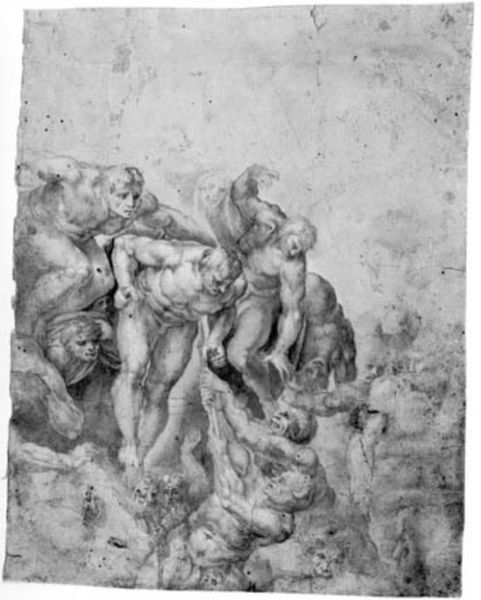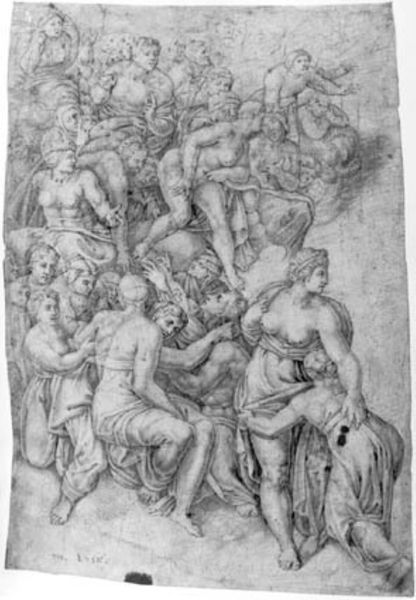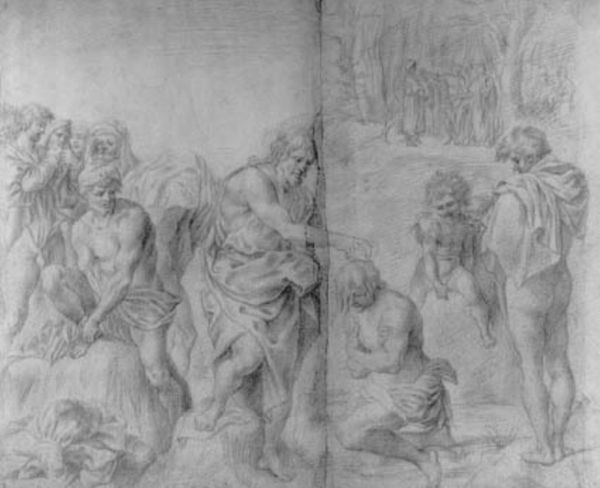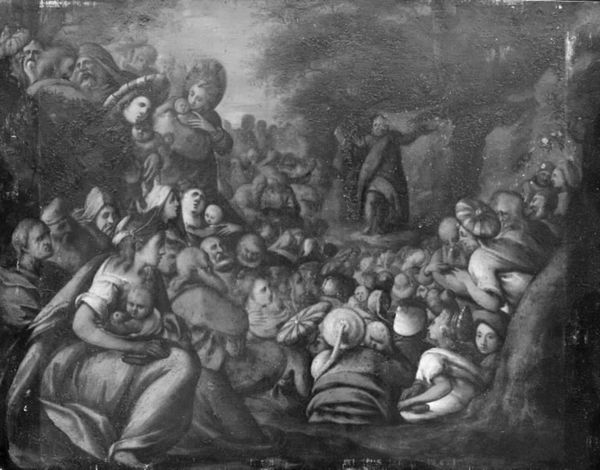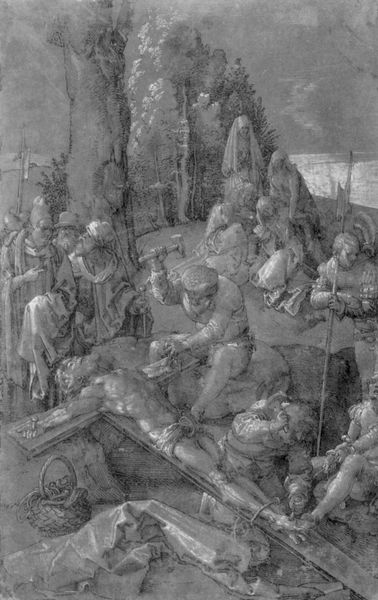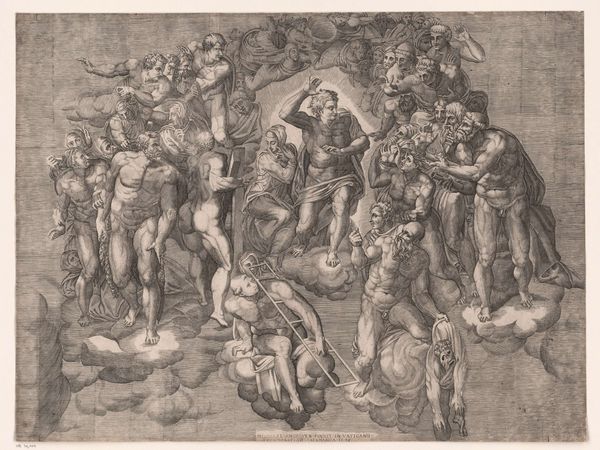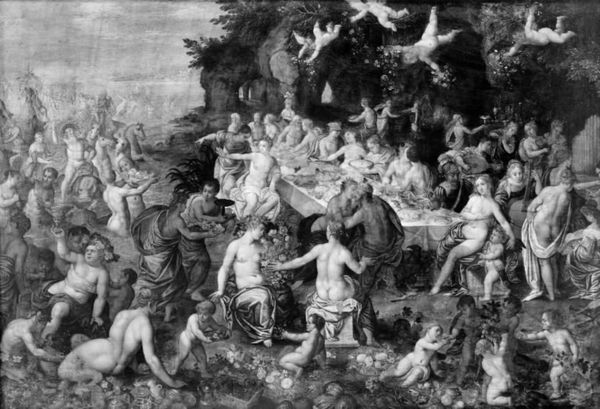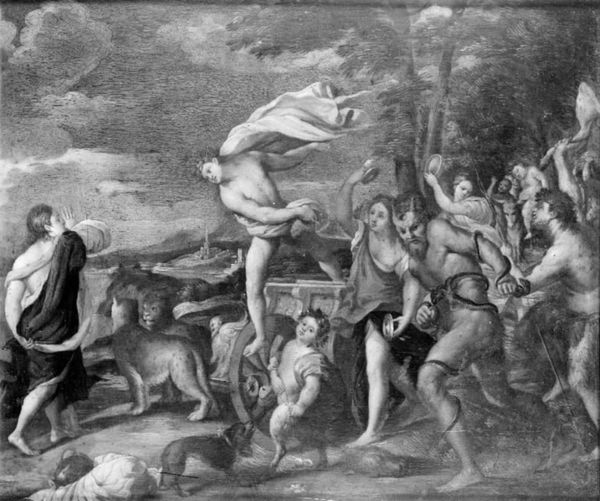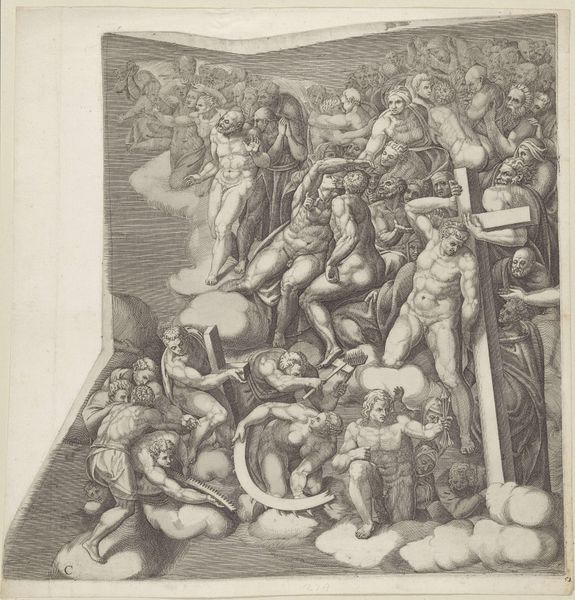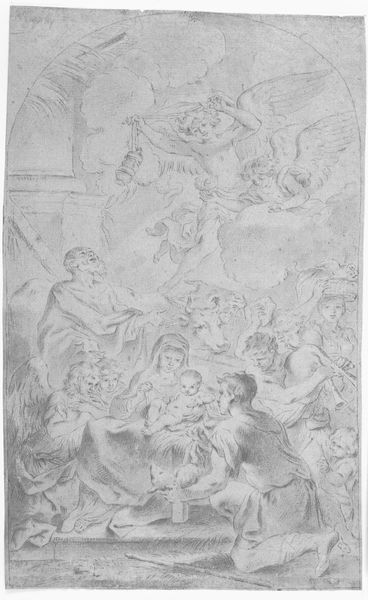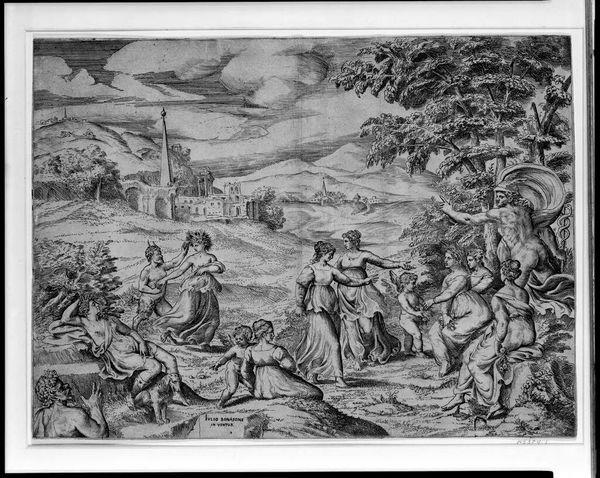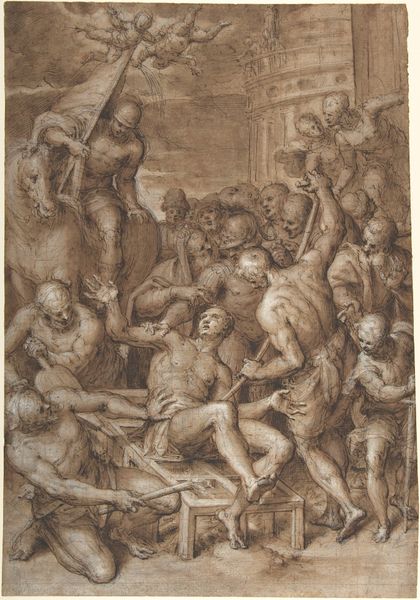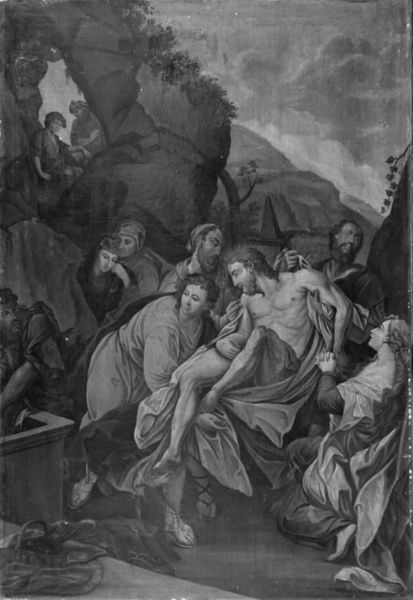
Christ as Judge Surrounded by Saints (upper central section of the Last Judgment) 1548
0:00
0:00
drawing, print, engraving
#
drawing
# print
#
mannerism
#
figuration
#
line
#
history-painting
#
italian-renaissance
#
nude
#
engraving
#
male-nude
#
christ
Dimensions: sheet: 18 3/4 x 20 3/8 in. (47.6 x 51.8 cm)
Copyright: Public Domain
Editor: Here we have "Christ as Judge Surrounded by Saints," created by Niccolò della Casa in 1548. It’s an engraving and gives a very dramatic, swirling impression. There's a strong sense of dynamism. What can you tell me about the context around this work? Curator: Well, immediately, it's clear we're dealing with an engraving influenced by Michelangelo's "Last Judgment" fresco in the Sistine Chapel. The interesting thing here is considering how printmaking served as a vital form of disseminating and interpreting iconic artworks to a broader public. How might the accessibility of prints like this have affected the Church's control over religious imagery? Editor: That's interesting, so it's not just the image itself, but the democratization of that image? How would the public have interpreted this piece in comparison to viewing the actual fresco in the Vatican? Curator: Precisely! Think about it. The original fresco was a monumental statement of papal power within a highly controlled space. This print, however, could circulate widely, sparking individual interpretations and even dissent. Its accessibility meant new dialogues and different approaches to understanding religious and artistic authority, what kind of audience were printmakers hoping to cultivate? Editor: So, the act of reproduction becomes almost a form of commentary or even critique, shaping the social and political role of this religious artwork. Curator: Exactly. Furthermore, consider that the Mannerist style – the exaggerated musculature, the dynamic poses – are amplified through the linear quality of engraving, creating its own aesthetic statement. It isn't a neutral copy, but an active re-interpretation! Editor: I never thought about it in quite that way before; considering not just what is being shown, but how its accessibility shapes our reading of the imagery and power. It really changes how you think about the art’s social impact. Curator: It certainly does!
Comments
No comments
Be the first to comment and join the conversation on the ultimate creative platform.
